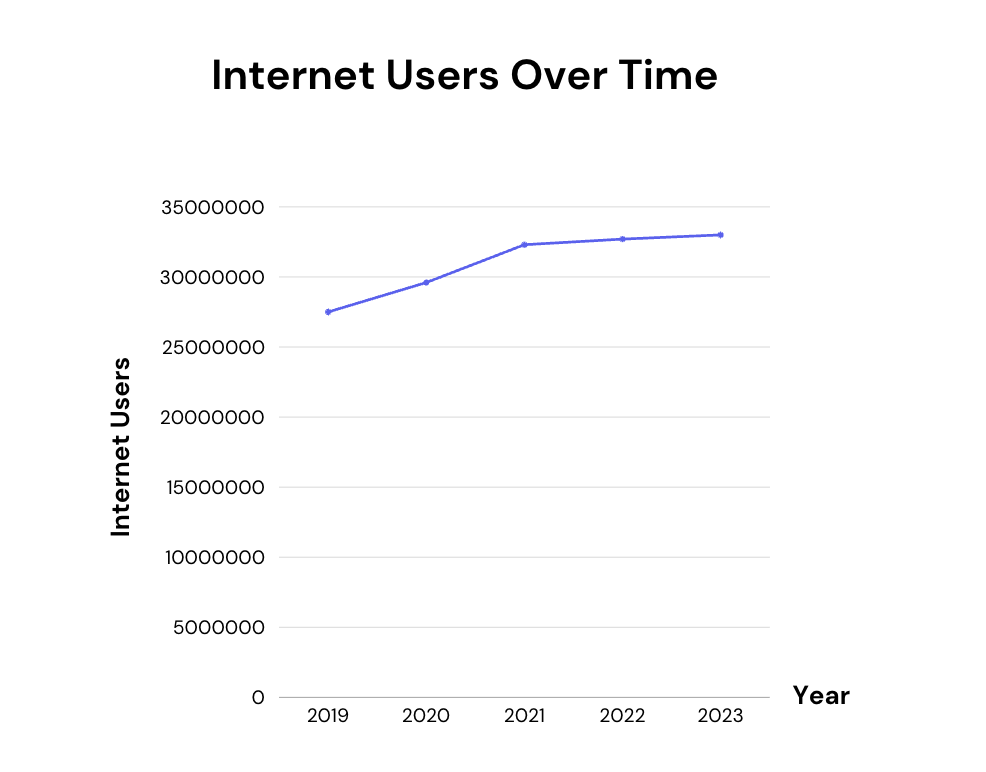The Landscape of e-Commerce
In today’s digital age, the e-commerce industry stands at the forefront of innovation and growth, redefining the way businesses connect with consumers worldwide. With the rapid advancement of technology and shifting consumer preferences, e-commerce has emerged as a dynamic and lucrative sector, poised for exponential expansion.
What used to be a good-to-have platform is now practically a must-have for businesses.
Look no further than Shopee, a leading e-commerce platform in Southeast Asia.
Shopee has rapidly gained traction, offering a diverse range of products, from electronics and fashion to groceries and household essentials. Through its user-friendly interface, innovative marketing campaigns, and seamless mobile app experience, Shopee has become synonymous with convenience and affordability, capturing the attention of millions of shoppers across the region.
Shopee’s success can be attributed in part to its innovative marketing campaigns that resonate with its target audience. For example, Shopee hosts annual themed sales events, such as “9.9 Super Shopping Day” and “11.11 Big Sales”, offering exclusive discounts, promotion, vouchers to incentivize purchase. By adopting a multi-channel marketing approach, leveraging a combination of paid advertising, email marketing, search engine optimization (SEO), and content marketing to reach users across various touchpoints, Shopee has cultivated a loyal customer base and sustained its rapid growth trajectory in a competitive market.
Moreover, the global pandemic has accelerated the shift towards online shopping. With lockdowns and social distancing measures in place, consumers turned to e-commerce platforms like Shopee to fulfill their shopping needs while minimizing physical interactions. Even during post-pandemic times like now, people have now been accustomed to shopping online. In any case, the pandemic has in fact played a catalytic role in promoting the online shopping behaviour globally.
Beyond traditional retail sectors, emerging trends such as livestream shopping and digital payments are reshaping the e-commerce landscape, presenting new opportunities for platforms like Shopee to innovate and diversify their offerings.

Before moving further, let’s take a look at the overview of E-commerce trends in Malaysia.

60% of them are weekly online shoppers.
(Source: Commission Factory)
There is a growing adoption of digital technology and online platforms within Malaysia. This surge in online shoppers presents a lucrative opportunity for businesses operating in the e-commerce sector, as it signifies a growing market of active and engaged consumers who are receptive to online purchasing. It can be attributed to several factors, such as convenience, accessibility, and a wide range of choice. I believe that everyone here has experience with online shopping given its widespread adoption and numerous benefits.
Challenges of the Current e-Commerce Space
The e-commerce industry has witnessed explosive growth in recent years, fuelled by technological advancements, shifting consumer behaviors, and the democratization of online commerce. However, behind the success of every e-commerce venture lies a narrative of triumphs and challenges. And the market situation is now different compared to five years ago. Technology used to be a limiting factor for many business owners back then. With the proliferation of ready-to-go platforms and marketplaces, business owners now face a completely different set of challenges.
1. Gaining Visibility
The E-commerce market is flooded with countless players, ranging from global giants to small startups due to relatively low barriers to entry compared to traditional brick and mortar stores. To stand out amidst this intense competition, capturing consumers’ attention has become increasingly difficult. Apart from fierce competition, established e-commerce giants always dominate search engine rankings and social media platforms, making it challenging for smaller e-commerce businesses to compete for visibility and exposure. In the end, poor visibility will put your business at a disadvantage, either being overlooked by potential customers or being kicked out of competition. Search engine and social media algorithms frequently change, impacting visibility strategies. Businesses must stay abreast of these changes and adapt their tactics accordingly to maintain visibility.
2. Getting Traffic
Traffic is a critical metric for e-commerce businesses as it directly correlates with potential sales and revenue generation. Without visitors to your website, there are no opportunities for conversions or sales. This could be due to factors such as lack of relevant keywords, low-quality content, or technical issues that hinder search engine crawlers from properly indexing the site. Low-quality content not only fails to engage users but also damages your credibility and authority in the eyes of both customers and search engines. If the website is not optimized for search engines, it may not rank well in search engine results pages (SERPs), resulting in low organic traffic. Websites with technical issues like broken links and slow loading times or unappealing content will directly impact user experience and deter users from visiting or navigating the site, leading to decreased traffic.
3. Driving Conversion
The primary goal of any e-commerce business is to generate revenue through sales, by converting website visitors into customers, but it’s easier said than done. The customer journey in e-commerce is often multi-faceted and involves numerous touchpoints across various channels. Customers may abandon the purchasing journey at any stage due to various reasons, such as unexpected costs, lack of trust, or usability issues. Hidden fees, shipping charges, or taxes that appear at the checkout stage can catch customers off guard and prompt them to abandon their carts. Transparency regarding pricing and shipping costs is crucial in mitigating this risk and fostering trust with customers. In recent years, with the proliferation of online scams and fraudulent activities, consumers are increasingly cautious about sharing personal and financial information online. A clunky, confusing, or non-intuitive website interface can frustrate visitors and drive them away.
4. Getting More Talented Workforce
Given the e-commerce industry’s rapid expansion and ever-increasing expectations, talent acquisition can be an important roadblock in attaining success. With the growth of online buying, e-commerce talent recruiting difficulties are becoming more prevalent. The digital revolution has enabled online shops to prosper and grow, but it has also put a lot of pressure on businesses to hire the proper people. Labour shortages hinder e-commerce, with many online firms having to stop advertising online because they cannot cope with the rising demand, especially during sales events on double digit dates.. Insufficient labor could severely lower down the speed of parcel delivery and customer service, affecting your whole business in the long run. By investing in digital marketing, you can reach customers more effectively without solely relying on a large workforce.

Everything You Need For Your Business Growth
Once you have identified the challenges, it’s time to think about solutions. By prioritizing user experience, investing in targeted marketing efforts, and leveraging data-driven insights, you can overcome the hurdles of visibility, traffic, and conversion with no more worries. Here is how you can take decisive steps to secure your position in the market.
Search Engine Optimization
SEO is the cornerstone of success in the e-commerce industry. It can enhance visibility by improving search engine rankings with high relevant keywords. Ranking well in organic search results provides a competitive advantage over competitors who rely solely on paid advertising. It provides sustainable and long term benefits without the recurring expenses associated with paid advertising campaigns. By investing in SEO and optimizing your website for organic search, you can outperform competitors and capture a larger share of the market. Also, capitalizing on technical SEO opportunities can improve your website’s performance and searchability, such as website speed, backlinks and site navigation.
Content Marketing
In e-commerce, content is king, and creativity is queen. Creating high-quality images and appealing content such as blog posts, articles, and videos not only grabs attention but also conveys information more effectively, leading to higher engagement and sales. By providing valuable information, you can position your brand as a trusted authority in your niche and attract more customers. And most importantly, keep your content relevant, fresh and quality. It is your secret weapon for standing out in a crowded digital landscape. We are bombarded with a load of content and information in our daily social media feed. Being able to craft a unique narrative and story will help your business to stand out among the rest.
Social Media Marketing
Social media isn’t just a platform; it’s a stage where your brand can steal the spotlight. With the right strategy, you can turn your e-commerce business into the talk of the town. Whether it’s captivating content, eye-catching visuals, or engaging interactions, social media like Facebook, Instagram and Twitter offers endless opportunities to showcase your brand in all its glory. By leveraging social media’s vast user base and advanced targeting capabilities, you can drive traffic to your websites, generate leads, and ultimately increase sales. And most importantly, you can create meaningful connections with your customers.
Paid Advertising
In the marketplace of e-commerce, paid advertising is a way that can propel your brand to new heights. Beyond driving immediate sales, paid advertising can also boost brand awareness and recognition. By consistently appearing in front of your target audience through paid channels, you can imprint your brand’s image and message in their minds, making it more likely that they’ll remember and choose you when they’re ready to make a purchase.

Final Thoughts
To sum up, in the fast-paced world of e-commerce, digital marketing isn’t just a strategy – it’s the lifeline that keeps your online store thriving. So, it’s time to transform your business with more powerful growth opportunities by implementing these tactics strategically. If you have no idea, you may reach out to us! We are more than happy to help you in your growth journey.


